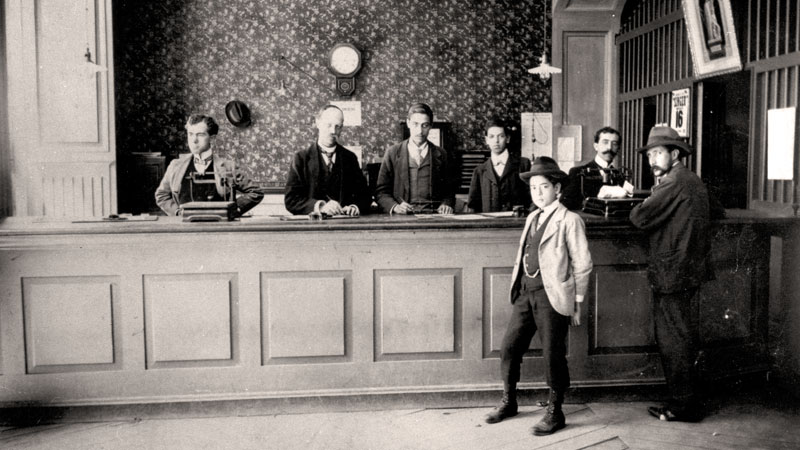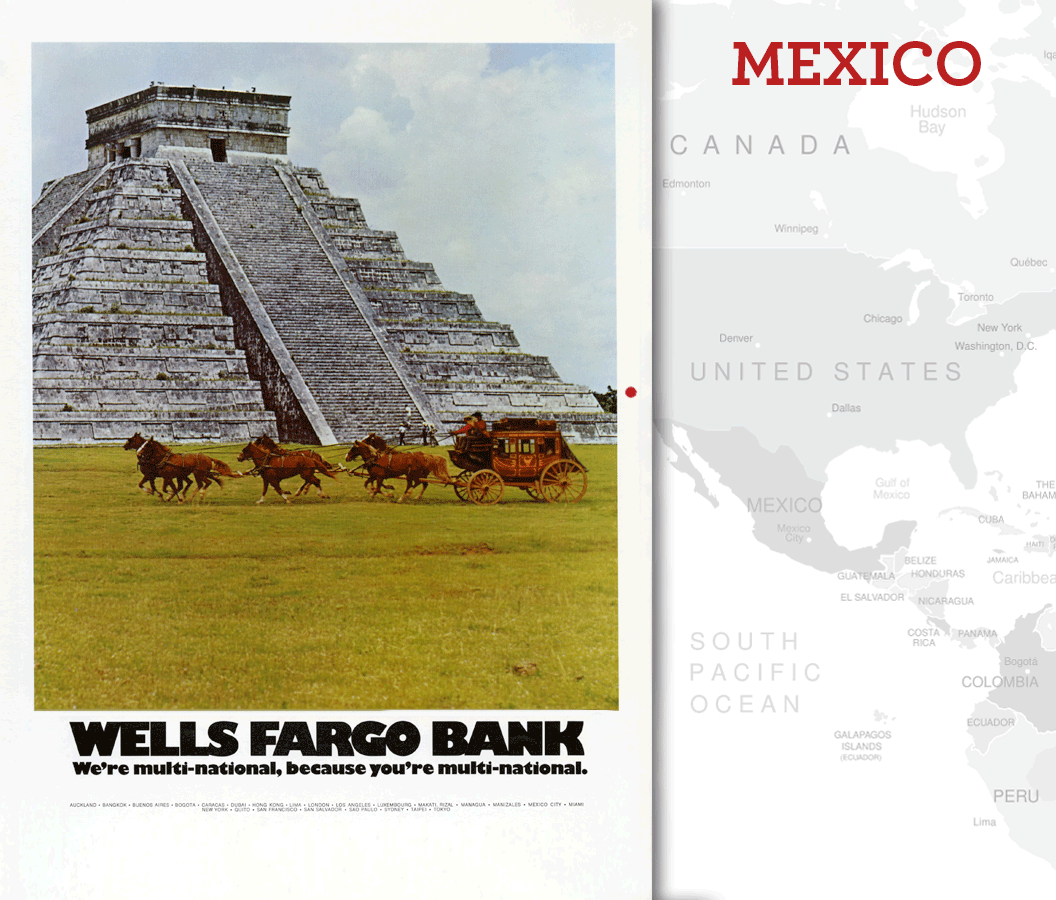Serving customers worldwide since 1852

The forty-niners may have been among the first to rush for gold in California, but they were soon joined by gold seekers from around the globe. Thousands of people from Europe, Asia, Oceania, and Central and South America flocked to California for gold in the 1850s. They needed a company that could safely send their gold, money, and mail back home, and they counted on Wells Fargo for those services.
Wells Fargo has been set up to serve international customers since year one. In 1852, the year of its founding, Wells Fargo & Co. opened its first international office in Panama, a key gold rush transit point between oceans. Customers relied on Wells Fargo and its appointed Panama agents, the banking firm of Hurtado y Hermanos, to safely transport tons of gold from California across the Isthmus of Panama.
When Wells Fargo & Co. founder Henry Wells traveled across the isthmus to California in January 1853, he was satisfied the company’s new agents in Panama could meet the needs of Wells Fargo customers. He wrote in a letter, “I have found our agents the very best men on the entire route — Hurtado & Co, the first house in this city. Of course, I am much pleased with them.”
From offices on the Grand Plaza of Panama City, the Hurtado firm provided banking and shipping services and mail delivery for Wells Fargo customers until 1861. Further north along the Pacific coast, Wells Fargo opened its first express office in Mexico, in the Port of Guaymas, in 1860.

Wells Fargo made agreements with existing businesses and offices around the world to do business for their customers. For customers needing shipping and financial services to Europe, Wells Fargo purchased the Paris office of Livingston, Wells & Company in 1853. Wells Fargo identified trusted merchants, shipping firms, and financial services companies to manage its express and banking business worldwide. Wells Fargo extended its services to Canada in 1858, opening a bank and express office in Victoria on Vancouver Island.
“More direct connections throughout the civilized world than any other American bank”

Business expanded to Asia in 1867 when mail steamships began regular service across the Pacific. As a result, trade between North America and the Far East grew, and Wells Fargo strategically positioned itself to help its customers grow their businesses in the Asia-Pacific region. By 1916, Wells Fargo had established express offices in 33 countries, including locations in Japan, Hong Kong, Thailand, India, Australia, and New Zealand, adding Shanghai and Manila, Philippines.

Wells Fargo office managers and foreign trade experts in Asia and elsewhere kept customers informed on shipping and commercial conditions, manufacturing output, and export opportunities, extending trade between America and ports throughout the world for business purposes.

By 1900, nearly 50 years after its start, Wells Fargo’s global operations in Europe included agents and correspondents in England, France, Germany, Belgium, Holland, Ireland, Scotland, Italy, Norway, and Switzerland. In these locations, Wells Fargo contracted trusted local businesses, such as the London-based shipping firm Eives and Allen, with taking care of Wells Fargo’s business and its customers.

In the United States, Wells Fargo also offered remittances for immigrant customers sending money back to Europe, and advertised these services in multiple languages. In 1903, a New York publication, The Financier, described Wells Fargo as “the greatest express company in the world, as well as one of the best known and strongest banking institutions. In the Banking Department, it is probable that Wells Fargo & Co. have more direct connections throughout the civilized world than any other American bank.”

In 1904, Wells Fargo manager Davis G. Mellor sailed to London to open the company’s first express office in Europe under its own name. Wells Fargo & Co.’s Express at 29 Cannon St. in London became part of a worldwide network of 4,100 Wells Fargo agencies connecting with customers using steamships, railroads, and stagecoach lines.

Withdrawing and opening international offices
War soon intervened in international commerce, and Wells Fargo withdrew its foreign agencies after the U.S. government consolidated the domestic business of Wells Fargo and other express companies as a wartime efficiency measure in July 1918. Wells Fargo’s banking operations continued in San Francisco as Wells Fargo Nevada National Bank, which maintained strong correspondent relationships with commercial banks around the globe. From 1900 to 1960, international commercial banking customers used Wells Fargo Bank’s correspondent banking and import-export finance services to grow their businesses.
From the 1960s to the 1980s, Wells Fargo opened dozens more international offices to invest in developing economies and to provide more services to increasingly multinational business customers. Bank advertisements in the 1970s featured Wells Fargo’s iconic stagecoach with backdrops such as Japan’s landmark Mount Fuji, illustrating Wells Fargo Bank’s now-global reach.
Stagecoach stops around the world
These 1974 bank ads positioned the company’s famous stagecoach in places Wells Fargo did business around the world.






While serving customers in Europe, Asia, and the Americas, Wells Fargo competed with a number of other U.S.-based banks. Philadelphia National Bank had ambitiously expanded into European and Asian banking markets, building an international network of offices to serve its multinational corporate customers and develop additional trade and business banking ties. Its overseas business continued under CoreStates Bank in 1983, and subsequently First Union and Wachovia Bank. All of these institutions are now part of Wells Fargo.

An unstable international economic climate of the mid-1980s, fueled in part by a debt crisis in Latin America, compelled Wells Fargo Bank to refocus on market opportunities in California and the Pacific Rim — and close its international representative offices and branches. For several decades, Wells Fargo relied on strategic international cooperative agreements and partnerships, such as Wells Fargo HSBC Trade Bank, established in 1995.
Wells Fargo’s current international presence
Wells Fargo returned to the international scene and reopened a representative office in London in 2005. Wells Fargo’s internationally based employees serve businesses and institutions across the globe, continuing a longstanding tradition of supporting corporate clients around the world.